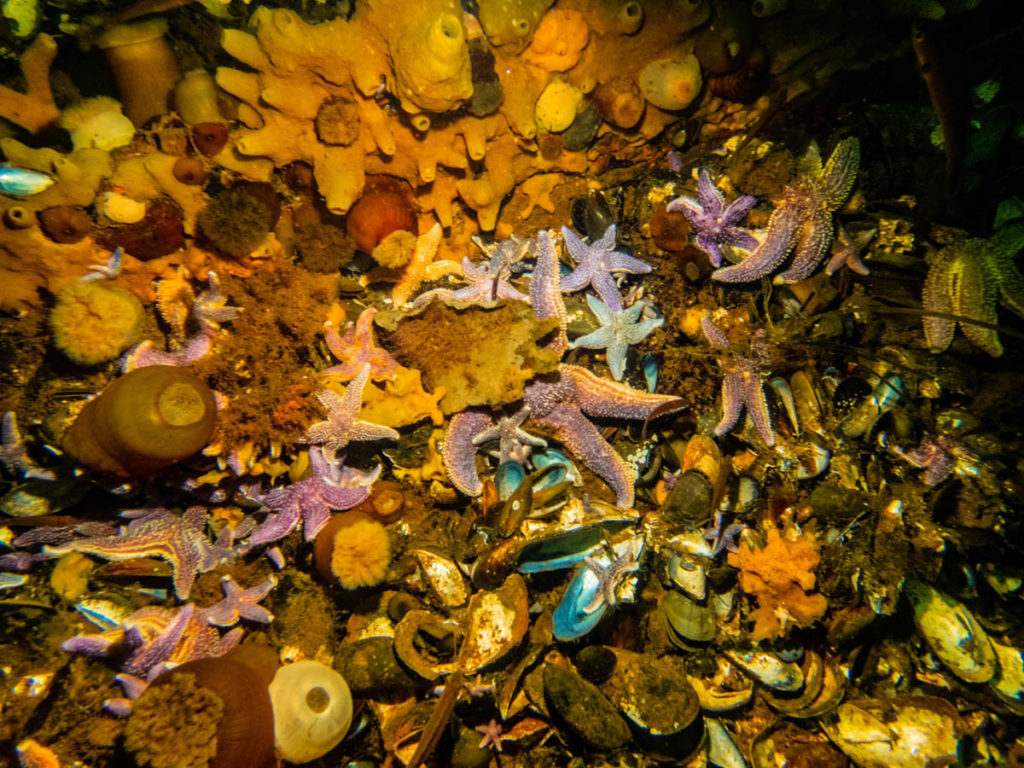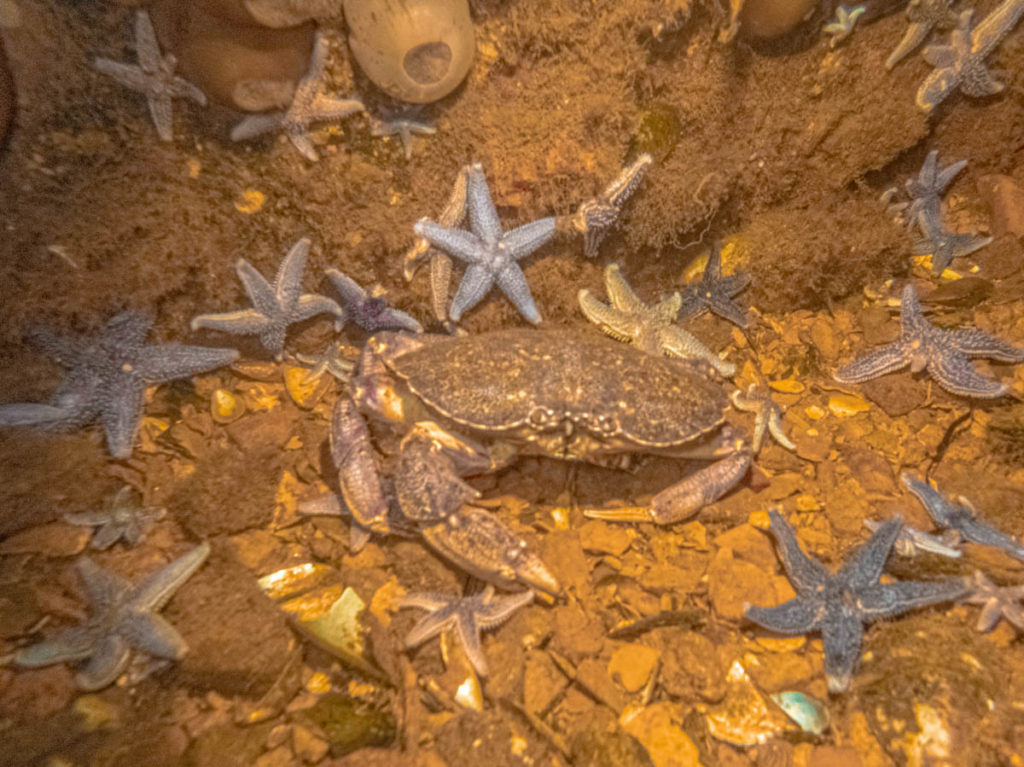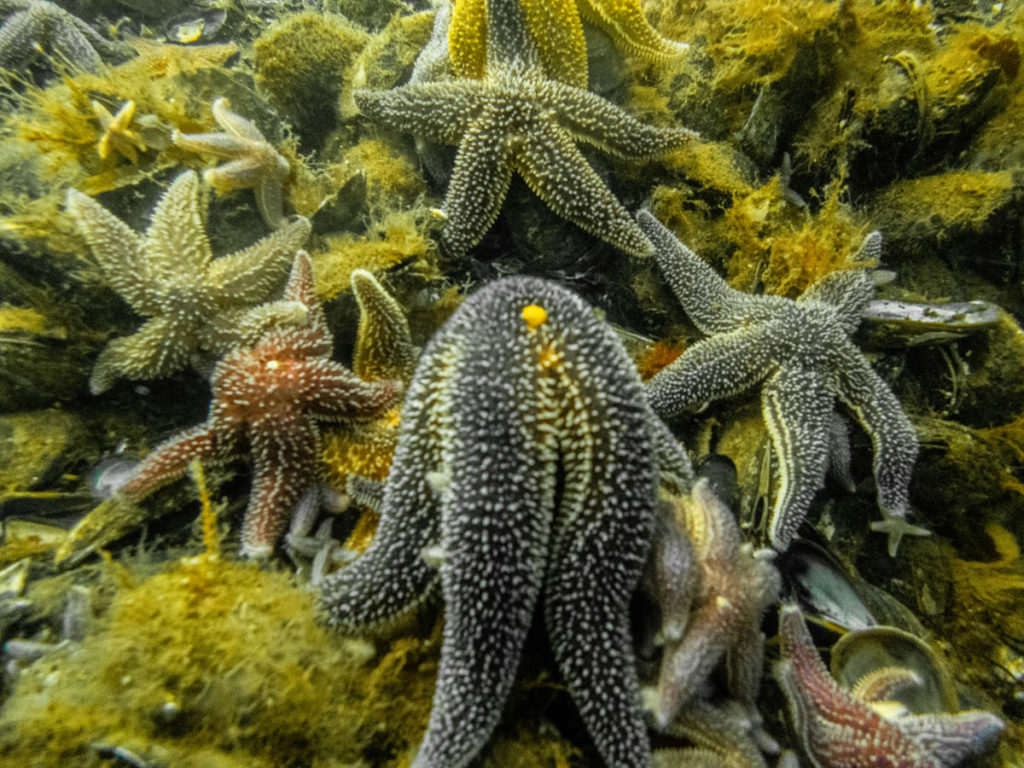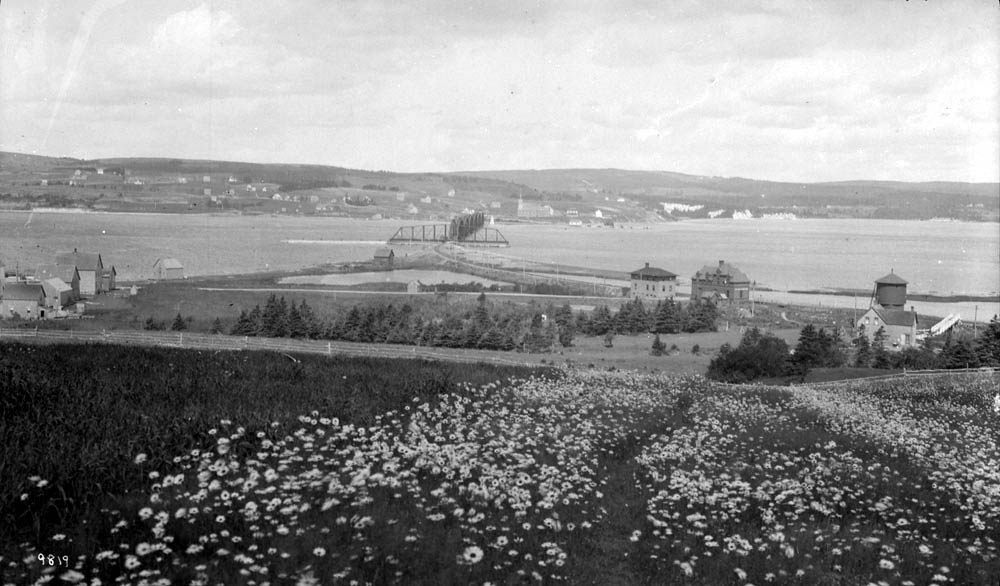In Grand Narrows, Cape Breton, Patricia Lockhart and 6 of her dive buddies met up to dive a wrecked construction barge. The weather was a lovely 17C with a little breeze. To assist when the current flows, local divers have put up a guideline from near shore to the piling. Slack water is best but near that time can work too with care. The underwater life is amazing and it was difficult for Patricia to choose which pictures to showcase.

In Nova Scotia, Canada, Grand Narrows Cape Breton (2001 population 15) is a village in the Cape Breton Regional Municipality. The city is the birthplace of Nova Scotia’s longest-serving Premier, George Henry Murray. Owned by the Grand Narrows Waterfront Planning Society, the Barra Strait Marina is located here. After the Intercolonial Railway constructed its line from the Strait of Canso to Sydney, Grand Narrows came to prominence during the 1880s, crossing the Barra Strait between Iona and Grand Narrows with the Grand Narrows Bridge, still in operation. It is Nova Scotia’s longest railway bridge. A hotel was built and became a famous resting place where it is said Sir John A. Macdonald, Canada’s first prime minister, was a guest. For families who are located in industrial Cape Breton, most of the residences in the small community are summer homes.

Dive Report
With a 50F depth temp, Patricia logged a maximum depth of 69′. This is a quick/easy entry, but due to the current, the best time to dive is at a slack tide. Sea life is beautiful, the tides and stirring make the pilings of the bridge and the big barge an oasis of sponges, sea anemones and a refuge to cunner fish clouds.
To assist when the current flows, local divers have put up a guideline from near shore to the piling. The diving is through the steel structure of the swing bridge, no longer running, then to a sunken barge.

Thanks to Patricia Lockhart for her photo contributions.







